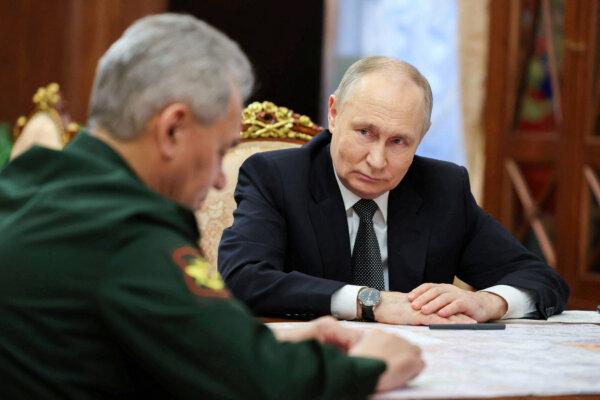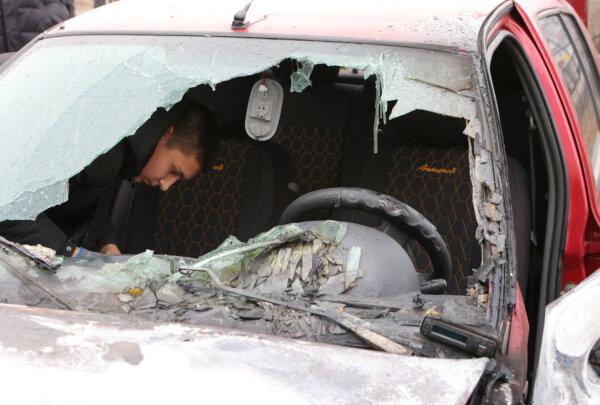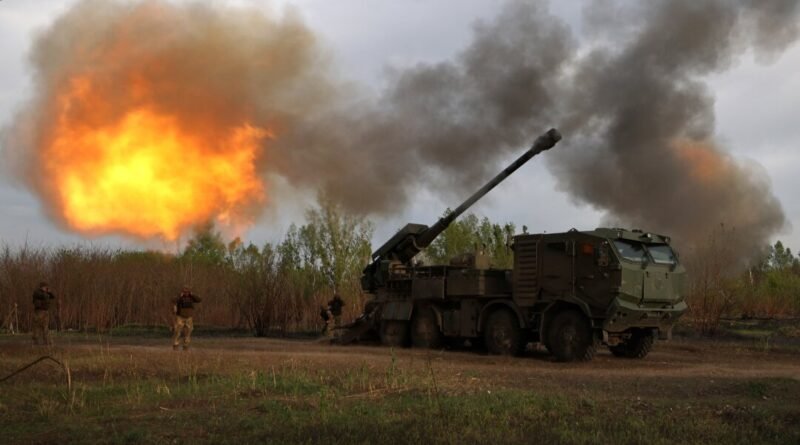Russia pledges to attack Western-supplied weapons after US authorizes new aid for Ukraine
With long-range munitions now headed for Kyiv, Moscow is reviving an earlier plan to establish a ‘buffer zone’ between the warring territories.
Russian forces are aiming to target Ukrainian storage depots that house arms and equipment supplied by the West, as stated by Russian Defense Minister Sergey Shoigu.
“We will increase attacks on logistics centers and storage bases holding Western weapons,” Gen. Shoigu informed top Russian military officials on April 23.
These remarks were made shortly before the U.S. Senate approved a $61 billion aid package for Ukraine after months of partisan debates.
U.S. President Joe Biden is expected to sign the spending bill later this week.
The controversial legislation is set to expedite the delivery of a variety of Western arms and equipment to Kyiv.
Included in these supplies, according to U.S. officials, are large amounts of anti-tank, air-defense, and artillery munitions, along with combat vehicles.
Senator Mark Warner (D-Va.), head of the Senate Intelligence Committee, stated earlier this week that the equipment would likely reach Kyiv “by the end of the week.”
According to Mr. Warner, this equipment includes U.S.-made Army Tactical Missile Systems (ATACMS) capable of launching long-range guided missiles.
Last year, the White House confirmed providing Ukraine with an ATACMS type capable of targeting distances exceeding 100 miles.
In October, Ukrainian forces utilized the long-range missile system for the first time, causing significant damage to two Russian airfields.
“I believe the [U.S.] administration was ready… to provide ATACMS,” Mr. Warner informed CBS News on April 21. “It’s part of the legislation.”

Kremlin: Aid ‘Won’t Change Dynamic’
After the Senate vote, Democratic Majority Leader Chuck Schumer (D-N.Y.) described the legislation as “one of the most important measures Congress has passed… to protect American security and the security of Western democracy.”
Ukrainian President Volodymyr Zelenskyy expressed gratitude to U.S. lawmakers for unlocking crucial aid for Kyiv’s war efforts after intense debates.
“This vote strengthens America’s role as a beacon of democracy and the leader of the free world,” he shared in a social media post.
Meanwhile, Moscow reiterated that new U.S. aid for Ukraine would not be sufficient to shift the battle’s outcome.
“The Russian armed forces are bolstering their frontline positions,” Kremlin spokesman Dmitry Peskov stated on April 21.
“The money allocated—and the weapons supplied—by the West will not alter this dynamic,” he conveyed to reporters.
Gen. Shoigu echoed Mr. Peskov’s claims, asserting that Russian arms have disproven the belief in the superiority of Western weapons.
He also repeated allegations that Russian forces recently forced hard-pressed Ukrainian troops to retreat from three more positions in the Donetsk region.
The general dismissed the idea that Western-supplied arms, including ATACMS, would change the conflict’s outcome.
“To counter the threats posed by the United States and its allies, we will enhance the composition of the [Russian] Armed Forces and increase production of essential arms and equipment,” he explained.
Earlier this month, Gen. Shoigu claimed that the Ukrainian military had lost over 80,000 troops and more than 1,200 tanks since the beginning of the year.
The Epoch Times could not independently verify the defense chief’s statement.
However, on April 20, The New York Times reported that five U.S.-made Abrams tanks, out of 31 sent to Kyiv last fall, had been destroyed in battle.

Russia Revives ‘Buffer Zone’ Plan
Despite this, in response to the expected arrival of long-range ATACMS, the Kremlin seems to have resurrected plans to expand the “buffer zone” separating Russia’s westernmost regions from northeastern Ukraine.
“Regarding this buffer zone issue, nothing has changed,” Mr. Peskov stated on April 24.
The idea of establishing a buffer zone between the warring countries was first introduced last month by Russian President Vladimir Putin.
“I can’t rule out the possibility that we might be compelled… to create a ‘sanitary zone’ in areas currently under the Kyiv regime,” Mr. Putin remarked on March 18.
He made this statement following a series of cross-border attacks, reportedly originating from northeastern Ukraine, on Russia’s western Kursk and Belgorod regions.
At that time, Mr. Putin suggested that the planned “sanitary zone” should be wide enough to prevent incursions into Russian territory by Western-made weaponry.
Subsequently, Russia retaliated against the cross-border attacks by targeting positions in Ukraine’s northeastern Kharkiv region, which borders Belgorod.
Officials in Kyiv believe that Russia’s plans to extend the buffer zone indicate Moscow’s intention to escalate its 26-month-old invasion.
“This planned buffer zone is a direct acknowledgment that the war will only intensify,” commented Mykhailo Podolyak, a top aide to Mr. Zelenskyy, in response to Mr. Putin’s statements.
“It demonstrates that Russia isn’t willing to engage in modern diplomatic relations and respect other countries’ sovereign rights,” he added.
Reuters contributed to this report.





